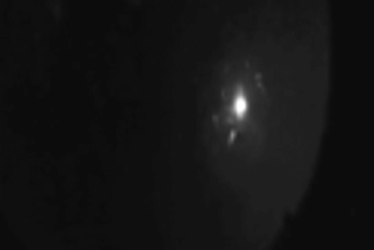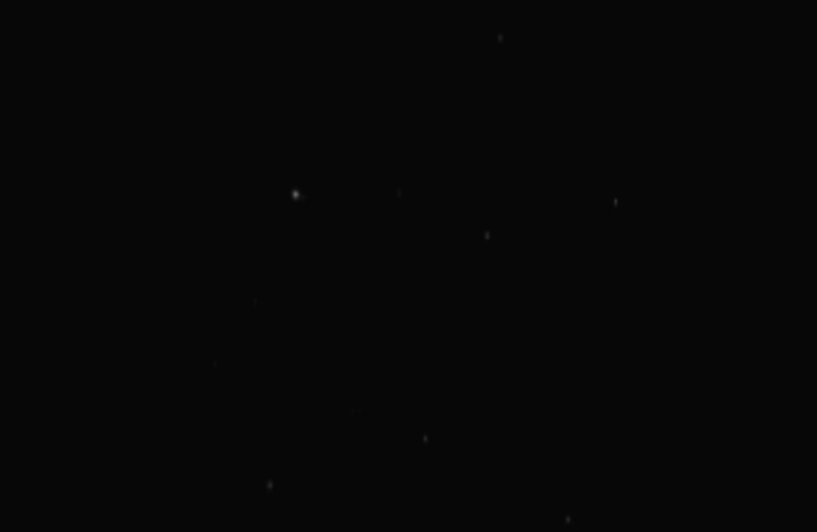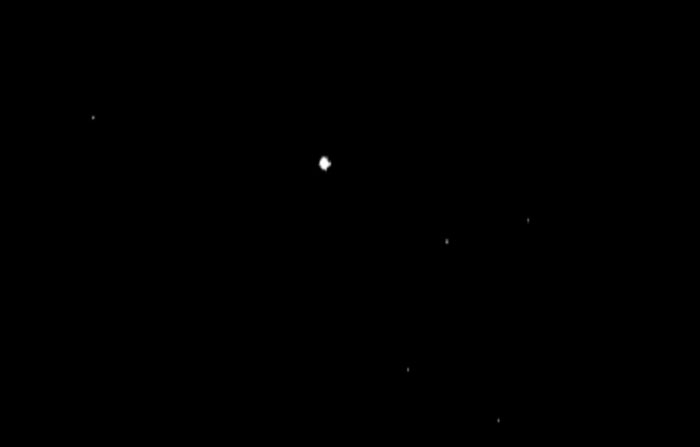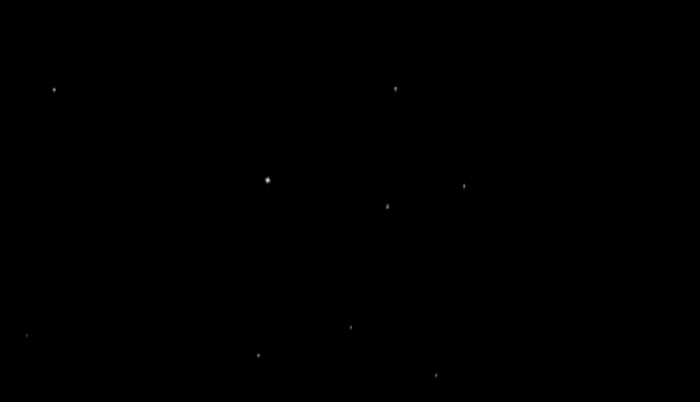Falling Stars: Acoustic influences on meteor detection
Darlene Edewaard – edewaardd@student.wpunj.edu
Michael S. Gordon – gordonm10@wpunj.edu
Department of Psychology
William Paterson University
300 Pompton Road
Wayne, NJ
Popular version of paper 4aPPb5
Presented Thursday morning, June 6, 2013
ICA 2013 Montreal
When meteors enter the earth’s atmosphere, they can be admired by observers for their beauty, but these astronomical phenomena also provide valuable information about the solar system. Meteors are pieces of cosmic dust, rock, and ice that have broken off of comets or asteroids and enter into Earth’s atmosphere. It should be noted that space rocks that have landed on the earth’s surface are called meteorites. Meteorites can be examined to determine their parent comet or asteroid and can offer insight on the age of the solar system. Astronomers rely on eyewitness reports from amateur astronomers and sporadic stargazers to estimate the objects’ paths and try to find meteorites, if possible.
Meteors present a breathtaking display for the eyes, but as meteors burn up in the atmosphere, they can give off energy that is also audible to the human ears. Certain sounds generated by meteors can be experienced without any instrumentation. When meteors break apart during their descent toward ground, they can create a sonic boom or generate rumbling or hissing sounds. Some observers have reported hearing the mysterious accompanying sounds during the visual event, while others have stated that the sounds were delayed by a few seconds after the meteors streaked across the sky. Meteors also reflect radio waves, which can be detected with radio telescopes. As meteors pass through Earth’s ionosphere, they excite electrons and subsequently create plasma trails. Radio signals from distant transmitters can ring through a radio receiver, if a meteor intersects the path between the radio transmitter and the radio receiver’s antenna. In other words, the signal emitted from the transmitter reflects off of the plasma trail and projects down to the receiver’s antenna. These “radio meteors” can sound like “pings,” “bongs,” or bits of speech or music depending on the radio station that is being reflected and can last from a few seconds to a few minutes (Barricklow, 2007).
Since both audio and visual signals are generated by meteors, these events can be used to gain insight on how they are integrated to produce our perception of these brilliant audiovisual displays. In particular, it may be that the audio signals may enhance one’s judgment of brightness and duration of visual events. The interaction of these signals presents an interesting conundrum because NASA and other professional astronomical organizations have increasingly begun to rely on more crowd-sourced data collection and amateur astronomers, to track meteoric events. We know from past audiovisual research with simple sine wave and flashed light stimuli that auditory signals can make visual signals appear to have a longer duration (Burr, Banks, & Morrone, 2009; Klink, Montjin, & van Wezel, 2011; Shi, Chen, & Müller, 2010). In general, the presence of an acoustic tone can influence perceivers to report longer durations and brighter intensities of visual stimuli.
Our research in this area consisted of a series of experiments that tested the detected brightness and duration of visual meteoric events when paired with several kinds of acoustic meteoric events. This research was innovative for its use of real meteor footage and recordings and its investigation of how these might interact to form perceptions of the visual meteoric events.
To produce these experiments, footage of meteors were taken from Thomas Ashcraft’s meteor archive, and five different types of radio reflections were employed as stimuli. Three distinct visual meteor clips were used in this experiment: a bolide (an extremely large and bright meteor; see Figure 1), a moderately bright meteor (about half as bright at its peak intensity as the bolide; see Figure 2), and a faint meteor (roughly half of the size of the moderately bright meteor; see Figure 3). In addition, the brightness and contrast of these clips were manipulated for one of the experiments, so that each of the three meteors appeared brighter and sharper (see Figures 4-6).

Figure 1. The Bolide

Figure 2. The Moderately Bright Meteor

Figure 3. The Faint Meteor

Figure 4. The Brightness Enhanced Bolide

Figure 5. The Brightness Enhanced Moderate Meteor

Figure 6. The Brightness Enhanced Faint Meteor
The audio signals were the five types of reflections of radio signals created by meteors, also taken from Ashcraft’s meteor archive. First, underdense events are usually produced by micro meteors (too small to be seen with the unaided eye). Second, overdense events are reflections of meteors that are visible with the unaided eye. Third, oscillating events are overdense events that are altered by atmospheric winds, while transition events contain the attack of an underdense event and the decline of an overdense event. Finally, meteor head echoes are radio meteor events that produce a “whistling” sound created by the reflection of radio waves as the ionized plasma trail spreads out (Richardson, 2000). The audio and visual meteoric events were manipulated so that the audio signal occurred either before, during, or after the visual meteor traversed the screen and compared with a series of judgments of the visual only meteor clips.
Results from this research suggest that when the auditory and visual signals occurred at the same time as the visual event (as opposed to the audio preceding/following), visual meteors were, on average, judged to be brighter and have a longer duration. Furthermore, in trials that contained no sound, the visual meteors were judged to be less bright and have a shorter duration than those with accompanying sound. Meteors, when paired with the overdense radio event, were perceived to be longer in duration, while the meteors paired with underdense radio events were judged to be brighter than those with other sound conditions. Finally, the trials containing brighter counterparts of the original three visual meteors were estimated to be both brighter and longer in duration than the original three meteors.
Reports of meteors vary widely from stargazer to stargazer, and for that reason, studying these celestial events can be difficult. Since the popularity of hunting for these unpredictable phenomena is ever increasing with the recent major fireball sightings, it is important to investigate factors that may affect an observer’s judgments of the fleeting events. In doing so, new techniques and strategies can be attempted to train viewers to increase the accuracy of their reports, thus making it easier for professionals to locate meteorites and learn more about what comprises our solar system.
References
(1) Ashcraft, T. (2009). Ashcraft’s nightly fireball and forward scatter movie archive. Retrieved from http://www.heliotown.com/Ashcrafts_Fireball_Archive.html.
(2) Barricklow, S. D. (2007). Sam’s meteor radio echo page. Retrieved from http://www.k5kj.net/meteor.htm#Background.
(3) Burr, D., Banks, M. S., & Morrone, M. C., (2009). Auditory dominance over vision in the perception of interval duration. Experimental Brain Research, 198, 49-57.
(4) Klink, Montjin, & van Wezel, (2011). Crossmodal duration perception involves perceptual grouping, temporal ventriloquism, and variable internal clock rates. Attention, Perception, & Psychophysics, 73, 219-236.
(5) Richardson, J. (2000). The american meteor society ltd. (ams) radio meteor project: an audio gallery of radiometeor events. Retrieved from http://www.amsmeteors.org/audio/index.html.
(6) Shi, Z., Chen, L., & Müller, H. J. (2010). Auditory temporal modulation of the visual ternus effect: the influence of time interval. Experimental Brain Research, 203, 723-735.





